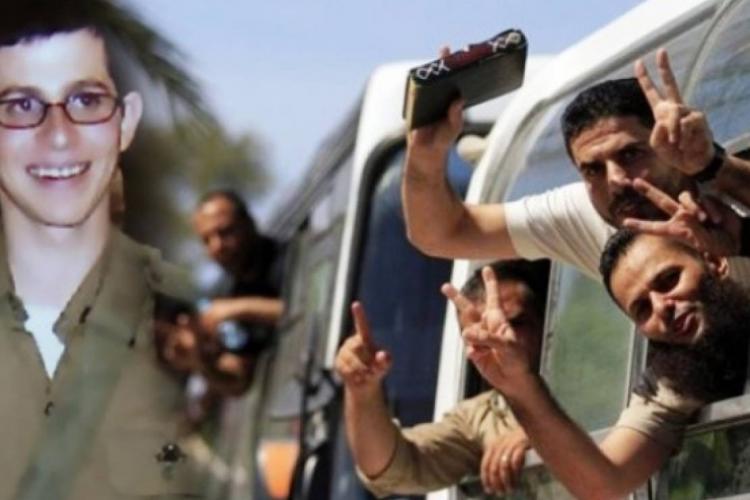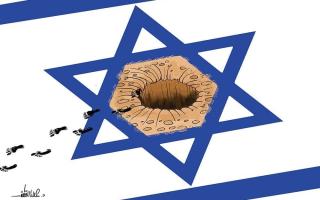October 18, Gaza-Palestine / Shehab News Staff
'Wafaa al-Ahrar Deal'
On June 25, 2006, the Palestinian resistance captured the Israeli soldier Gilad Shalit from inside his tank, during a military operation east of Rafah Governorate, the Gaza Strip. The process of capturing Shalit and keeping him alive in the Gaza Strip for five years was recorded as one of the greatest operations of the Palestinian resistance, after an honorable prisoner exchange deal.
Today, the eighteenth of October, marks the tenth anniversary of the 'Wafaa al-Ahrar deal', in which the Palestinian resistance liberated 1,027 prisoners, most of whom were of high sentences and life sentences, in exchange for the release of the Israeli soldier Gilad Shalit. A deal that culminated in the great efforts of the Palestinian resistance, and the unparalleled steadfastness and perseverance of our Palestinian people, while the occupation was silenced by the shame of defeat after Israel failed to restore its soldier by all means.
Details of Liberation Transaction
The head of the Hamas political bureau at the time, Khaled Meshaal, announced that a prisoner exchange agreement had been reached on October 11, 2011, after strenuous negotiations through more than one mediator between the Hamas leadership and the Zionist entity, but the Egyptian mediator succeeded in completing the deal which the exchange process took place in two stages.
The first phase of the "Wafa al-Ahrar" deal was completed on the 18th of October with the release of 450 prisoners, in addition to all 27 female prisoners, including 5 female prisoners sentenced to life in prison. In the first phase, 315 prisoners sentenced to life in prison were released out of 450 sentenced to a total of 92,000 years in prison, after heroic operations that resulted in the killing of 1,120 soldiers and settlers.
In the second phase of the deal, on the eighteenth of December, the occupation released 550 Palestinian prisoners from Israeli prisons, sentenced to an estimated 2,300 years. The Palestinian resistance stipulated that the prisoners released in the second phase should be convicted on a national or security background, not criminal and that they should not be prisoners whose prison term is about to expire.
Resistance Creativity and Persistence
The creativity of the Palestinians resistance in Gaza appeared on the day it handed over soldier Gilad Shalit to the Egyptian mediator, who would hand him over to the occupation, in a very complicated security operation. Al-Qassam Brigades directed dozens of cars of identical shape to the Rafah crossing, and Shalit was in one of them. Amid anticipation and vague guesses, at 10:05 am, Shalit entered the Egyptian side of the Rafah Crossing with the martyred commander Ahmed al-Jabari holding his hand alongside a large group of al-Qassam fighters.
Original Achievement
The Wafaa al-Ahrar deal is a real historical achievement for the Palestinian resistance project, and it represented a great victory for the Palestinian people. The deal also included Palestinian prisoners from all Palestinian lands, from the Gaza Strip, the occupied West Bank, the territories occupied in 1948 and occupied Jerusalem, as well as prisoners from the occupied Syrian Golan; This reflects the resistance's keenness on the comprehensiveness of the deal.
Shadow Unit
In the wake of Shalit’s capture, the Al-Qassam Brigades established the Shadow Unit in 2006, to be the secret unit tasked with hiding Shalit and keeping him inside the Gaza Strip and fail all the attempts of Israel's to navigate or identify his custody location, and it would become one of the most important units operating in the Brigades. The shadow charged with securing the "Israeli" prisoners captured by the battalions and hiding them from the occupation and its agents.
The shadow unit was able to achieve unparalleled intelligence success over the course of five years, as all attempts by the Israeli occupation, with its tools and intelligence services, to gain access to any information or thread about the place of Shalit's detention, failed.
Ten years after the Wafa al-Ahrar deal, the Al-Qassam Brigades have been in control for several years over a number of captured enemy soldiers, and they are trying dearly to reach a new exchange deal for the release of prisoners from the inhuman occupation prisons.







